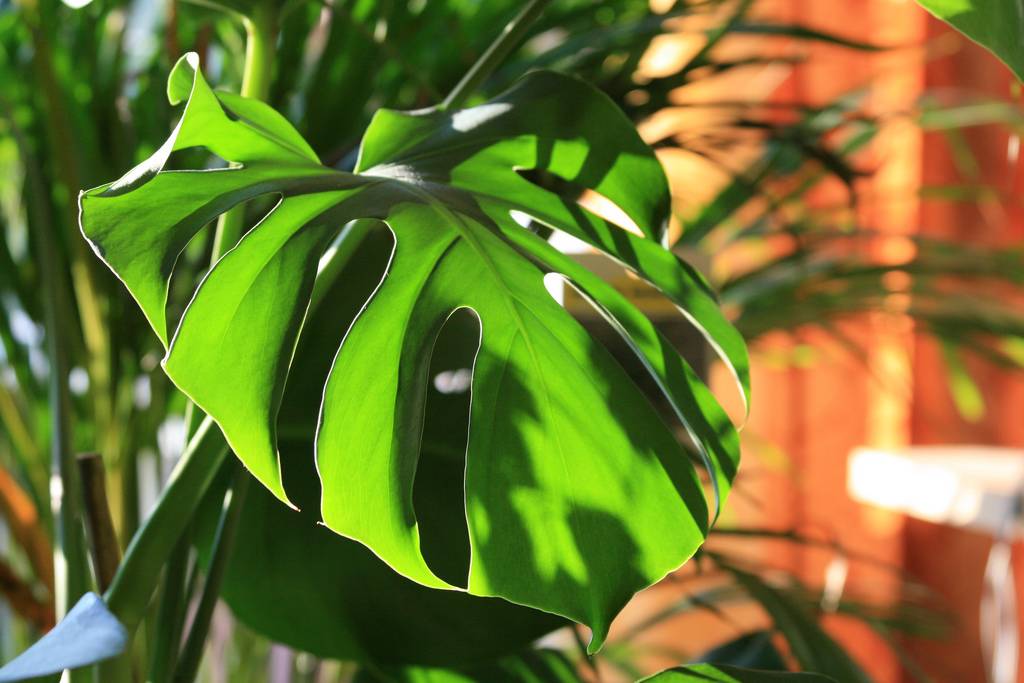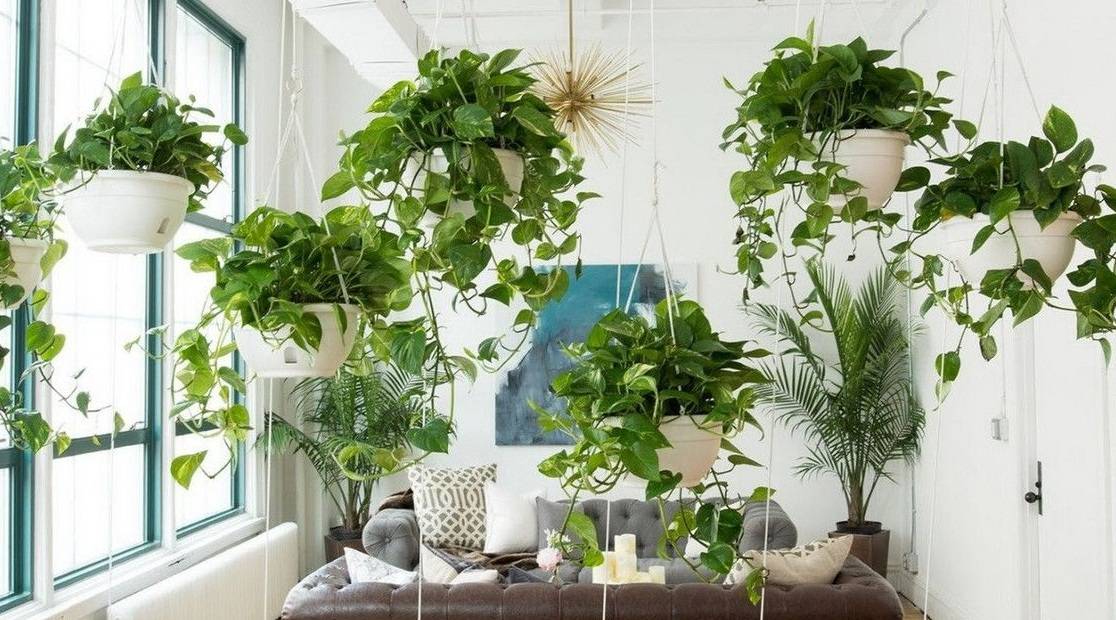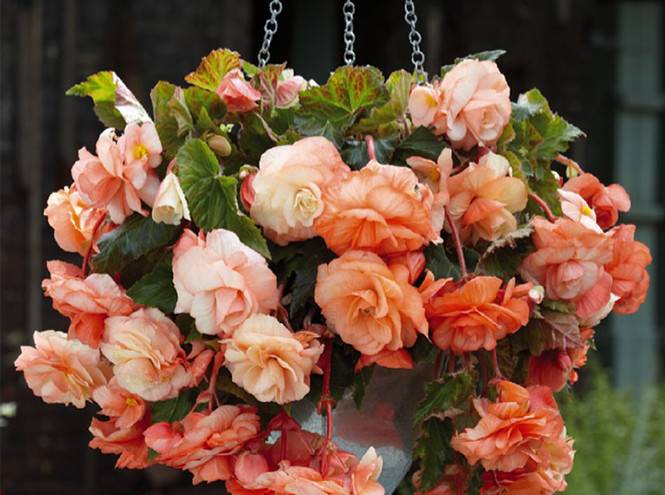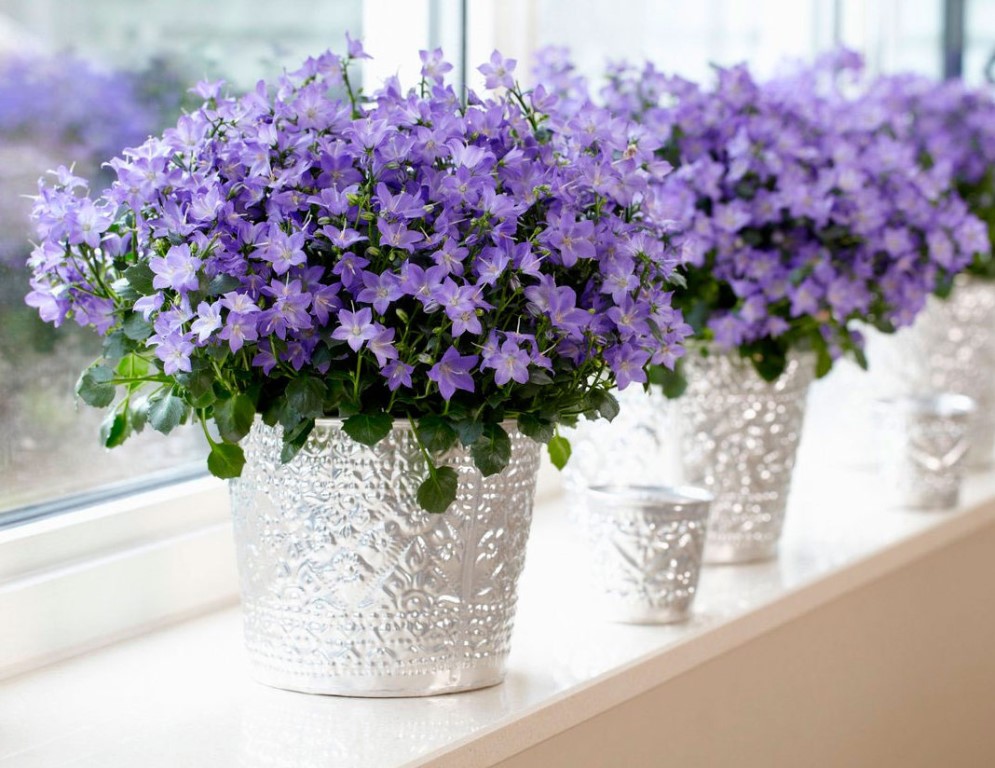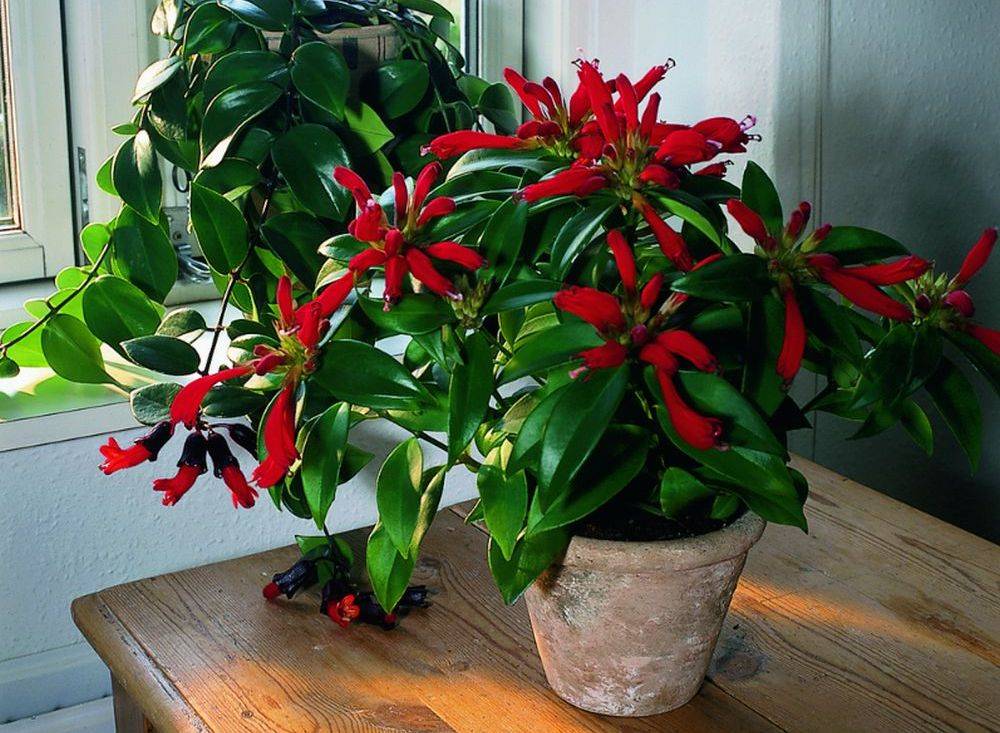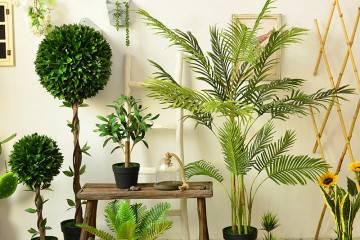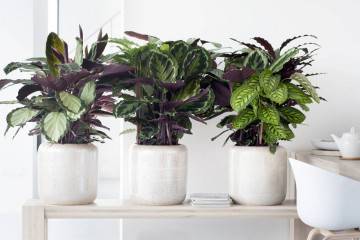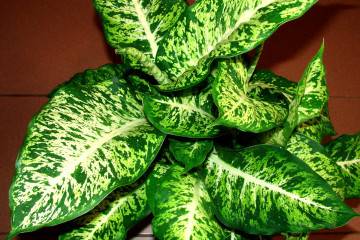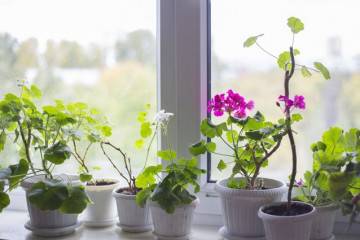Climbing houseplants and hanging vines
Content:
Climbing plants can be used to make compositions that not only decorate the house, but also purify the air. They perfectly zone the space, fill empty walls. The variety of loaches is so great that almost every letter of the alphabet can be named loach, and even more than one. To make a choice in favor of a particular plant, you need to study the description of plants below.
Climbing indoor plants
Experts identify several main groups of curly indoor flowers. Some of them have incredibly decorative foliage, while others are characterized by bright and lush blooms. Some are undemanding to care and conditions of detention, others, on the contrary, are very capricious and it is impossible to violate the rules of caring for them.
Indoor loach flower
The loach is an indoor flower that has a huge variety of species. It belongs to ampelous plants, that is, it must be placed at a height. This makes it difficult to care for the plant.
Loach varieties may differ in petal color. If the loach does not bloom, attention is drawn to the foliage of the plant, the type of which also depends on the variety and differs in the shape of the leaves and its color scheme.
Folk signs about curly indoor flowers
It is believed that wax ivy is able to expel representatives of the stronger sex from the house, so that only they get all the attention. For this reason, you can hear that young and unmarried girls should not bring ivy into the house.
There is another point of view: according to it, ivy and other climbing plants are able to attract success and luck into life, and protect against the negative effects of evil forces. However, it is best to keep the plant on the balcony, otherwise it is believed that dark forces will constantly be present in the home and poison people.
Where to place the loach room in the apartment
The loach is a domestic flower that needs to be lifted high above the floor so that its stems can grow freely downward. In specialized stores, you can find original pots and containers with which hanging plants can be attached not only to the wall, but also to the ceiling.
To understand how demanding a loach houseplant is for sunlight, you need to look at its leaves. If the plates have light streaks or streaks, the plant will need enough light. If the leaf plates are solid green, the flower will feel great in partial shade.
Indoor creepers blooming
Indoor lianas are the closest relatives of tropical plants. In the wild, they tend to grow vertically upward, aiming for as much daylight as possible. Vines are able to independently find support for themselves.They cling to the branches of nearby trees and bushes, twine around the structural elements of the building with thin stems. At home, vines will need to create special designs that will allow them to move up.
All vines can be divided into two broad categories:
- blooming;
- which are characterized by the presence of decorative foliage.
The most popular are flowering vines. They are decorative and look incredibly impressive when all care requirements are met.
Begonia ampelous
The ampelous begonia differs from other curly house flowers in asymmetrical foliage and variegated colors of petals. Subject to the relevant plant requirements for the level of soil and air humidity, temperature regime, begonia will decorate both the room and the veranda and the outdoor gazebo.
The flower belongs to the Bindweed family, usually blooms magnificently. Loves high humidity and warmth. The optimum temperature for wintering is + 15 ° C. It is not difficult to create suitable conditions for ampelous begonia:
- provide protection from direct sunlight;
- do not spray leaf plates and flowers;
- water moderately;
- take care of high humidity.
Diplomatic property (mandeville)
Although the diploma is quite capricious, but it is very beautiful. It is characterized by glossy dense leaf plates of bright green color, medium-sized flowers that look like a funnel. The color of the petals can be crimson, pale pink, white.
In order for a curly indoor flower to please with generous flowering, it is necessary to provide it with conditions as close as possible to those to which it is accustomed in the wild. For example, in summer, the air temperature should not fall below +22 ° C, in winter this figure can be +12 ° C.
In addition, you need to ensure:
- a lot of sunlight;
- frequent airing;
- watering two to three times a week, when the topsoil begins to dry out;
- high level of humidity.
Morning glory room
Morning glory pleases the grower with bright purple or mauve flowers that have a funnel shape. The plant prefers semi-shaded areas, indirect sunlight. The optimum temperature for a flower is +20 ° C, if the thermometer drops below +15 ° C, the morning glory withers. During the flowering period, it needs frequent watering.
Campanula (indoor bell)
This plant has a large number of species, differing from each other in shades of flowers and the shape of leaf plates.
Most often, bells with flowers of the following color are found:
- white;
- blue;
- pink;
- purple;
- blue.
It is important that the plant receives sufficient sunlight without being exposed to direct sunlight. In summer, the temperature should be between +20 ° C, in winter - around +10 ° C. The plant needs high humidity in the air and soil.
Hanging indoor vines
Vines can grow not only vertically upwards, sometimes they go downwards. Such plants are commonly referred to as creeping or drooping.
Scindapsus (epipremnum)
Scindapsus is unpretentious. It feels good in sunny and shady places, the temperature regime does not matter either. It is only important that the temperature does not drop below +15 ° C. The only thing that these indoor vines do not like is a draft and dry soil.
Syngonium
One of the fastest growing vines. The shape of the leaves vaguely resembles an arrowhead. Syngonium is undemanding to lighting conditions, room temperature. The flower tastes like water, but it should not stagnate at the roots. In winter, it is recommended to reduce the number of waterings; instead, you can spray the flower leaves with a spray bottle.
Tradescantia
A herbaceous plant, the leaf plates of which can be monochromatic green or variegated. Each flower has three petals, which are white or pinkish in color. In the summer, the plant should be kept at a temperature of about +25 ° C, in winter this figure can be +12 ° C.
The plant needs regular watering, partial shade and feeding. During the growing season, nutrients should be applied at least twice a week.
Hedera (common ivy)
Ivy is usually used for zoning space, decorating hedges. Leaf plates can have a wide variety of shades of green and have light streaks. The flowers are rather modest, small.
Hedera is shade-tolerant, prefers a low temperature, in winter this figure can be +6 ° C.
Hoya (wax ivy)
Hoya leaves are covered with a waxy bloom. The shape of the leaf plates is varied. There are specimens with ovoid, cordate or oval leaves. Usually they are green, there may be small specks of light color. Hoya flowers have five petals.
Eschinanthus
The main feature of this curly indoor flower is the original, as if inverted inflorescences of a rich red color. The plant loves light, but cannot stand direct sunlight. It responds negatively to sudden temperature changes and drafts. The optimum temperature in summer is about 23-25 ° C, in winter the eschinantus is comfortable at 15-17 ° C.
Indoor vine plants
Plants belonging to this category are capable of braiding any objects that surround them. They take up space around and look incredibly decorative.
Creeping ficus (dwarf, ampelous)
Thanks to its long thin roots, the ficus is able to weave the most real cobwebs, spreading among the plants located next to it. This is a houseplant with small leaves, such as ivy, heart-shaped, their surface is covered with a grid pattern.
Jasmine
Jasmine is characterized by thin shoots that need support. The plant is decorated with flowers of yellow, pale pink or white tones. They usually appear one at a time or are collected in neat umbrellas. The plant needs a low temperature, but not lower than +12 ° C, high humidity.
Philodendron climbing
The roots of a houseplant are airy, and therefore it can actively spread throughout the room. The leaves are velvety, heart-shaped. Philodendron loves well-moistened soil, diffused daylight, regular spraying.
Monstera
Monstera is a climbing plant with large, rugged leaves. The flower can grow several meters, and therefore it needs space. The aerial roots of the monstera are perfectly fixed on rough walls.
Unpretentious climbing indoor plants
Experienced flower growers call the loach the most unpretentious climbing plant. However, there are other plants that are undemanding to the conditions of maintenance and care.
Cissus (indoor birch)
The liana received its second name due to its external resemblance to birches. Cissus leaves are either whole or have dissections. The plant grows well upward, clinging to the supports with antennae. It blooms modestly, almost imperceptibly. The optimum temperature is between 18 and 27 ° C. Needs abundant watering, light shading from direct sunlight, does not tolerate drafts.
Hoya (wax ivy)
Everything this plant needs: a certain temperature regime, in summer up to +30 ° C, in winter not lower than +15 ° C.The plant thrives in partial shade, does not require regular watering.
Which curly flower to choose depends on personal preferences, the conditions that exist in the apartment. You also need to take into account the experience of caring for indoor flowers. Novice growers may prefer undemanding vines such as hoya. Experienced flower growers will be able to grow a capricious beauty begonia. In any case, a house plant with very small ivy-type leaves will beautify your home.
